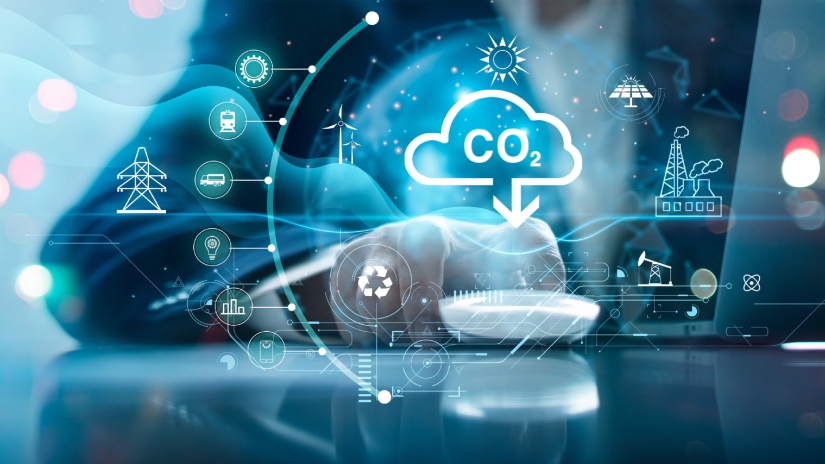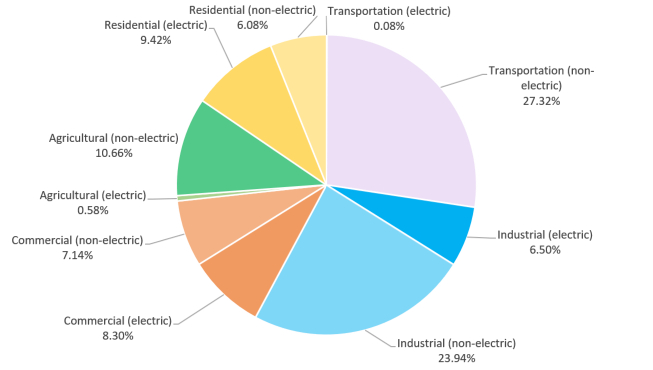By John Glassmire, Senior Advisor, Grid Edge Solutions, Hitachi Energy,
Scott Gibson, Energy Storage Program Manager, Snohomish County Public Utility District, and
Justin Bean, Sustainability Strategy and Innovation Lead, Environment Business Division, Hitachi America, Ltd.
Since the adoption of the Paris Agreement and the release of the United Nations’ Intergovernmental Panel on Climate Change (IPCC) Special Report on Global Warming of 1.5°C in October 2018,1 a growing number of countries have committed to net zero greenhouse gas emissions targets over the coming decades. As of March 2022, more than 70 countries have set a net zero target, and more than 3,000 businesses and financial institutions are working with the Science-Based Targets Initiative to reduce their emissions in line with climate science.2 These are noble goals — and a formidable achievement.
While the public sector can stimulate action through regulation in addition to investment and funding, the private sector has the means and motivation to leverage technological innovation to reduce carbon and greenhouse gas emissions.

In 2020, the electric power sector accounted for about 25% of total U.S. energy-related CO2 emissions, distributed across multiple end-use sectors (transportation, industrial, residential & commercial and agriculture). Expanding to total emissions per end-use, the transportation sector emitted about 27% of all US CO2 emissions in 2020 , compared to the industrial sector (24%), commercial & residential (13%) and agriculture (11%) sectors.3 Figure 1 shows a breakdown of the end-uses by electrification status.

Figure 1: Breakdown of emissions by end-use and electrification.
Source: https://www.epa.gov/system/files/documents/2022-04/us-ghg-inventory-2022-main-text.pdf
These end-uses face significant challenges in the decarbonization journey. Consider, for example, the need for the transportation industry to transition from primarily fossil-fuels towards decarbonized and electrified sources. The addition of millions of electric vehicles will strain utilities around the country as they struggle to deal with new levels of electricity demand and distribution and for which most electric infrastructure has not been designed. Additionally, much of the current US energy grid is aging and needs to be significantly modernized to manage the volatility of clean energy production and volume, secure against cyber threats and increase resiliency . Already, states such as California and Texas, have requested that residents restrict the charging of electric vehicles (EVs) to avoid blackouts during its 2022 heatwave.4
Other challenges faced by these industries as they seek to enhance sustainability include:
Like many corporations around the globe, Hitachi is committed to achieving carbon neutrality by minimizing our own carbon emissions and leveraging sustainable solutions in our operations. We are focused on reducing energy consumption and emissions from our factories and facilities, and from suppliers that provide goods, services and materials to Hitachi. It’s all part of a goal that was announced in 2021: the attainment of carbon neutrality across all Hitachi operations by 2030. We are also innovating in our products and services to help our customers and partners achieve their sustainability goals.
Hitachi’s efforts in the transition to carbon neutrality focus on three key areas:
We are using the knowledge we gained from our own journey to carbon neutrality to help ease and speed up decarbonization for other organizations around the globe — particularly those in the energy and transportation industries.
Recently, Hitachi partnered with Snohomish County Public Utility District (SnoPUD), a public utility in Washington state, to put its decarbonization expertise to work. Together, Hitachi and SnoPUD built a next-generation microgrid that provides reliable power, utilizes vehicle-to-grid (V2G) power for resiliency and powers the utility’s operations on 100% renewable power.
Additional innovations pioneered by this project include a community solar photovoltaic array that enables members to invest in solar generation, a grid-forming battery storage system with advanced virtual synchronous generator to enhance reliability, and distributed control and automation technologies that serve to streamline and simplify management.
Projects such as the Hitachi-SnoPUD partnership blaze the trail to sustainability, illustrating the types of projects and technologies that will need to be deployed to help achieve goals of carbon neutrality. These projects also demonstrate the value of partnership between the public and private sector in the global transition from fossil fuels to clean, sustainable energy. These types of partnerships will be key to successfully meeting decarbonization goals.

“Picking the right partner is really important because you’re going to have to work through obstacles together,” says Scott Gibson, SnoPUD’s energy storage program manager. “Hitachi was there with us right from the start. They worked with us through all of the challenges to bring this very complicated project to fruition.”
Beyond contributing to the global greater good, companies working to achieve carbon neutrality can expect benefits such as:
By deploying the right strategies and technologies, organizations can contribute to the global drive toward decarbonization while profiting greatly from their efforts — likely the largest win-win opportunity of the century.
But many corporations struggle to make this vision a reality. A recent survey by the Boston Consulting Group found that while two-thirds of surveyed companies consider climate and sustainability to be a top priority, only 20% of them are positioned to make real progress in achieving their decarbonization goals.5
If your organization faces similar challenges, Hitachi stands ready to help. We’re here to assist you in achieving sustainability transformation and contributing to the global push to 2050.
To see Hitachi's sustainability solutions in action, register for our on-demand webinar.

Senior Advisor, Grid Edge Solutions, Hitachi Energy
John specializes in strategies for clean, low-cost, reliable power combining energy storage, electric vehicles, microgrids, and distributed energy resources (DER). His global experience includes grid edge solutions enabling reliable renewables for remote areas, resilient renewable power for critical infrastructure, and grid modernization to support transportation electrification. An accomplished speaker, he has led training workshops for thousands of people. John also serves as affiliate instructor at the University of Washington.

Energy Storage Program Manager, Snohomish County PUD
Scott Gibson is the Energy Storage Program Manager at Snohomish County PUD. He is a Professional Engineer and a 1987 graduate from the University of Wyoming where he received a BSEE. After graduation, Scott worked for Boeing and then with a consulting company designing building electrical systems. In 2000, Scott joined the PUD and is now working on new electrical generation projects. Scott worked on the development of a tidal generation project, and helped to design and construct two “run of the river” hydroelectric projects. He is now the project manager for the PUD’s latest energy storage project - The Arlington Microgrid. The microgrid was just recently commissioned in January 2022 with Hitachi Energy.

Sustainability Strategy and Innovation Lead, Environment Business Division, Hitachi America, Ltd.
Justin furthers the mission of social innovation and building a more sustainable society through technology and business innovation. Justin has worked with both Silicon Valley startups and fortune 500s that are applying AI, IoT, and other disruptive technologies to improve our cities, commutes, and daily lives. He has worked in the US, Japan, and South Africa on projects that include sustainability, smart cities, electric vehicles, renewable energy, machine learning, and smart transportation. Justin was the recipient of the THINK Prize for the Financial Empowerment Challenge from renowned innovation and design firm IDEO and holds an MBA in sustainable management.